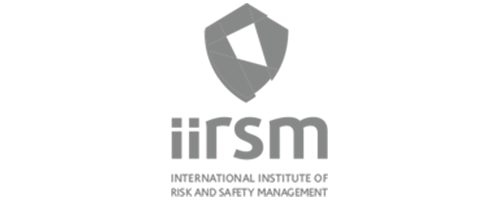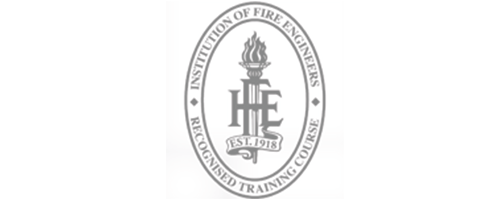Do I need a safety management audit?
- If you are satisfied that your current arrangements are suitably robust and will also stand up to scrutiny by the enforcing authorities, then you shouldn’t need this service. If you are unsure, or would just like confirmation that you are doing everything reasonable to ensure the safety of your buildings and to comply with your legal duties then this service is recommended for you.
What does this involve?
- Our consultant will make contact with you in advance to confirm the arrangements and what will be discussed on the day. They will normally want to speak with the person who manages health and safety for the portfolio and to look at all relevant documentation, such as testing and maintenance records, fire and general safety policy, control of contractor’s documentation, training records etc. This process normally takes between two and three hours, during which we will take notes ready for preparation of your report.
How long will it take to get my report?
- The report production takes place after an assessment of all relevant information and this will be bench marked against national standards to see where your strengths and weaknesses may lie. This process normally takes about 3-5 working days.
What format will the report be in?
- The report will be in PDF format and will be forwarded by e-mail. An action plan will be prepared for any recommended areas for improvement, and can be provided in Excel format, as required.
Can I get assistance with implementing any of the recommendations?
- Yes, we provide ad-hoc and ongoing safety support as required. We can discuss this with you following the production of your report, if required.
What is a ‘risk assessment’?
- A risk assessment is a systematic identification of all safety related hazards within a premises and is designed to analyse how those hazards may adversely affect the building and its occupants. It will identify the level of risk that those hazards may present and also identify suitable control measures for any significant findings. As part of the assessment, an action plan will be formulated with reasonable timescales assigned for the implementation of any necessary remedial action. The risk assessment can examine a specific hazard, such as fire, or can encompass a number of more general areas, as with the ‘general health and safety risk assessment’.
Why do I need a risk assessment for my building?
- The ‘Legally Responsible Person’ (in the case of residential blocks this is normally the Landlord, or the Managing Agent), must arrange for a competent person to carry out ‘suitable and sufficient’ risk assessments for all those areas that they have control of.
- For fire safety - The Regulatory Reform (Fire Safety) Order 2005 requires that all buildings (other than single domestic dwellings) must have an assessment carried out and all significant findings must be recorded. This includes the ‘common areas’ of residential blocks.
- For general health and safety - The Health and Safety at Work Act 1974 and the Management of Health and Safety at Work Regulations 1999 specify measures necessary to comply with more general health and safety requirements.
Who can carry out the assessment?
- Only somebody with an appropriate level of knowledge and experience regarding the legislation, relevant safety standards to be applied, and the principles of a risk assessment should undertake the assessment(s). This person must be able to make appropriate judgements regarding risk and recommend suitable measures to eliminate, or manage these risks. This person is known as the 'Competent Person' and in most cases this will be a safety professional. In some premises (normally larger commercial organisations) this expertise may be available in-house.
- It is the responsibility of the ‘Responsible Person’, to ensure that they appoint a ‘Competent Person’ to help them to fulfil their legal obligations. Persons registered with recognised accrediting organisations, such as the Institution of Fire Engineers (IFE), or other similar body are recommended.
What will the assessment cover?
- The fire risk assessment will identify threats to the life safety of the building and its occupants from fire. In practical terms this would include assessment of the following areas:
- Ignition sources
- Combustibles
- Premises layout and construction
- People at risk
- Fire detection and alarm systems
- Firefighting provision
- Escape facilities
- Fire safety signage
- Emergency lighting
- Fire emergency plan
- Training/information
- Testing and maintenance of fire safety systems
- For more general health and safety assessments, the survey should (as a minimum) cover the following;
- General maintenance and upkeep
- Ventilation
- Lighting
- Accumulation of waste materials
- Condition of floors
- External walkways
- Falls from height and falling objects
- Stairs and handrails
- Doors and gates
- Fixed glazing
- Separation of vehicles and pedestrians
- Smoking
- Health and safety signage
- Electrical equipment
- Noise
- Hazardous substances
- Control of contractors
- Water supplies
- Asbestos
What happens once the assessment is complete?
- Once the assessment is complete, any 'significant findings' must be recorded in writing and any/all persons who may be affected by the assessment will be informed accordingly. In addition, an action plan will be formulated with regard to the implementation of any necessary remedial action. The action plan will specify exactly what is to be achieved, by whom and in what timescales. The action plan is required to be continually kept up to date to provide a full audit trail facility for management and enforcing authorities.
When should the assessment be reviewed?
- The assessment should be reviewed 'whenever it is considered to be no longer valid'. In practical terms this means following any significant change to the occupancy, or layout of the building, following any safety related incident, or near miss, or at periodic intervals as stated within the assessment (generally considered to be 12 monthly, for normal risk buildings). To assume that no changes have occurred and therefore a review is not necessary is not considered sufficient to comply with the legislation and a formal review process should be undertaken. The review process should be used as confirmation of those actions that have been implemented since the last assessment date and to properly assess any additional hazards that may have been introduced.
What will happen if I don’t carry out an assessment?
- The main risk with not carrying out safety assessments is that you will be unaware of any hazards that could affect the safety of the occupants or cause damage to the building. This could result in serious injury, death and/or significant financial loss. In addition, as already highlighted, it is a legal requirement to carry out risk assessments and to manage the findings. Failure to do so could lead to enforcement action being taken against the 'Responsible Person(s)' with fines and/or custodial sentences being handed out for more serious breaches. Additionally, insurance companies may not provide cover for those buildings where risks have not been properly evaluated and controlled.



